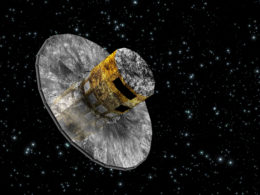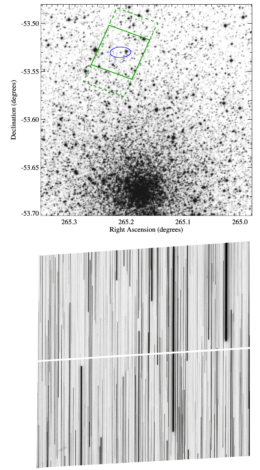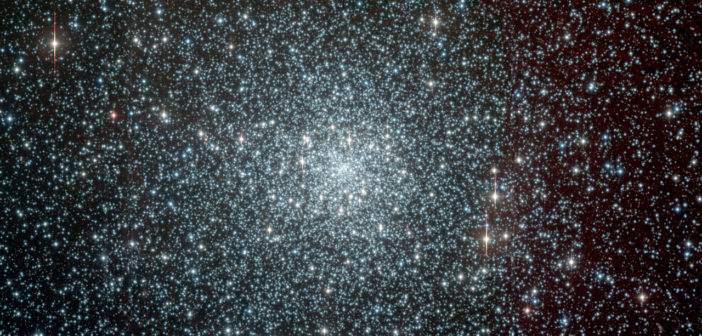Measuring precise distances to faraway objects has long been a challenge in astrophysics. Now, one of the earliest techniques used to measure the distance to astrophysical objects has been applied to a metal-poor globular cluster for the first time.
A Classic Technique

An artist’s impression of the European Space Agency’s Gaia spacecraft. Gaia is on track to map the positions and motions of a billion stars. [ESA]
Precise distance measurements aren’t only important for setting the scale of the universe, however; they can also help us better understand stellar evolution over the course of cosmic history. Stellar evolution models are often anchored to a reference star cluster, the properties of which must be known precisely. These precise properties can be readily determined for young, nearby open clusters using parallax measurements. But stellar evolution models that anchor on the more-distant, ancient, metal-poor globular clusters have been hampered by the less-precise indirect methods used to measure distance to these faraway clusters — until now.

Top: An image of NGC 6397 overlaid with the area scanned by Hubble (dashed green) and the footprint of the camera (solid green). The blue ellipse represents the parallax motion of a star in the cluster, exaggerated by a factor of ten thousand. Bottom: An example scan from this field. [Adapted from Brown et al. 2018]
New Measurement to an Old Cluster
Thomas Brown (Space Telescope Science Institute) and collaborators used the Hubble Space Telescope to determine the distance to NGC 6397, one of the nearest metal-poor globular clusters and anchor for one stellar population model. Brown and coauthors used a technique called spatial scanning to greatly broaden the reach of the parallax method.
Spatial scanning was initially developed as a way to increase the signal-to-noise of exoplanet transit observations, but it has also greatly improved the prospects of astrometry — precisely determining the separations between astronomical objects. In spatial scanning, the telescope moves while the exposure is being taken, spreading the light out across many pixels.
Unprecedented Precision
This technique allowed the authors to achieve a precision of 20–100 microarcseconds. From the observed parallax angle of just 0.418 milliarcseconds (for reference, the moon’s angular size is about 5 million times larger on the sky!), Brown and collaborators refined the distance to NGC 6397 to 7,795 light-years, with a measurement error of only a few percent.
Using spatial scanning, Hubble can make parallax measurements of nearby globular clusters, while Gaia has the potential to reach even farther. Looking ahead, the measurement made by Brown and collaborators can be combined with the recently released Gaia data to trim the uncertainty down to just 1%. This highlights the power of space telescopes to make extremely precise measurements of astoundingly large distances — informing our models and helping us measure the universe.
Citation
Thomas Brown et al 2018 ApJL 856 L6. doi:10.3847/2041-8213/aab55a


1 Comment
Pingback: Hubble measures trigonometric parallax for a globular NGC 6397